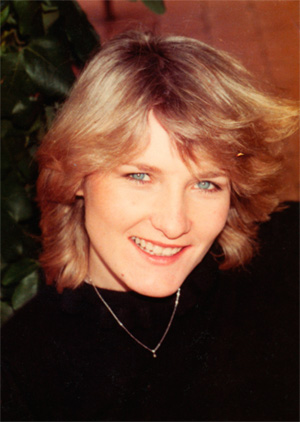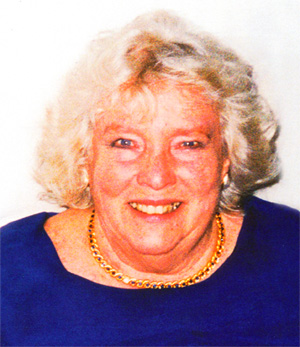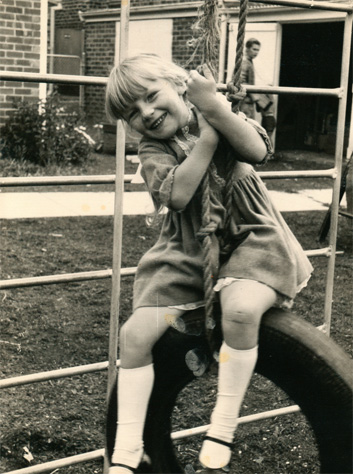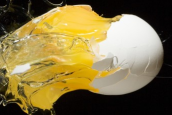The model, the story and the mystery shooting
Police are reopening a 32-year-old gun death in which Janita McNaughton died under suspicious circumstances. Crime writer John Silvester investigates.
PT3M35S 620 349Theo Komianos is a liar and up to his neck in a fatal shooting, that is a matter of public record, but now an old question is again being asked – how did his gun manage to take a life?
More than 32 years after his gun shot a woman between the eyes, cold case detectives are re-examining whether it was a bizarre accident or something else.
The case of part-time model Janita McNaughton would have remained firmly closed if not for new information that includes an intriguing and unproven theory involving a notorious local crime ring.

Joan Easterby's brother-in-law says she was grief-stricken after Janita's death.
Cold case investigations are notoriously slow (this one began three years ago) but the amazingly patient McNaughton family has been desperately hoping for a breakthrough before her elderly mother's failing health finally collapsed.
Tragically Joan Easterby died on June 7 still not knowing the outcome of the new investigation.
Before we can examine the theories we must establish the facts.

Robert McNaughton (left), Janita (right) and sister Kim. who died in a car accident
Janita McNaughton, 23, was clawing her way back from heroin addiction when her new boyfriend, Mark Adams, invited her for a post-Christmas trip to Phillip Island.
The day after Boxing Day 1983 a group of six: McNaughton and young jewellers Adams, Komianos and Michael Kelly plus Komianos' mother and his fiancee headed to the island for a break. After drinking at the beach house they (without Mrs Komianos) took a 6.7-metre Savage outboard half cabin cruiser out on Western Port Bay.
Komianos, 29, hid two unlicensed pistols (a Beretta .25 and a Bernardelli .25) in a towel that he carried onto the boat. He would later tell police the pistols were to ward off robbers at his city jewellery shop.
He failed to explain why he took the guns (his father's apparently) to the island, why he didn't leave them at the holiday house and why he took them on board the boat.
After a short time Komianos moored the boat bow first in the bushes to fish.
He would later say he took the small Bernardelli from the towel and tried to shoot a floating beer can. When he missed, Kelly gently mocked that he was "piss weak".
Komianos responded: "You do better," then, he would eventually tell police, as he tried to hand the gun to Kelly it fell to the floor, discharging the bullet that struck McNaughton. Not a glancing blow but straight between the eyes from close range.
They returned to the Newhaven Yacht Squadron (but first Komianos dumped the guns overboard) with the critically injured woman, who was airlifted to hospital but died that night.
Changing the story
At first, the boat crew lied, claiming a mystery offender fired the fatal shot from shore.
Then after seeking legal advice they provided police with a second version – that it was a tragic accident and the gun discharged when dropped on the boat deck. The problem was the entry wound was horizontal, indicating the shot was not fired from an angle.
Ballistic experts examined the bullet and concluded it was a flush shot and not a ricochet.
Homicide detectives thought the second version was nonsense and charged Komianos with manslaughter. The case soon moved to the coroner's court that then acted as a committal hearing.
Defence lawyers argued the straight angle of the entry wound could be explained if the victim was looking or bending down at the exact moment the gun discharged.
This was despite one witness saying "I think she was standing straight up" and another confirming she was upright.
Government pathologist, Dr James McNamara (known as Mac-the-Knife) testified it was impossible the shot was fired from the deck if the victim was standing upright and looking out.
But, he said that if the floor shot theory was right she would have had to be staring directly at the pistol. "I think the head would have to be inclined, the whole body possibly yes."
There was no forensic evidence to support the theory with no powder marks found on the boat and with the guns dumped no way of testing if the Bernardelli would fire if dropped.
Perhaps McNaughton was watching the gun and followed its trajectory as it fell, which would explain why she was staring down the barrel.
But it would have hit the deck in less than 0.37 seconds, which would make it likely she would have followed the flight with her eyes rather than her head, minimising the chance she was aligned with the barrel at the moment of discharge.
Komianos and Kelly said the barrel was pointing at the deck when it was dropped, which means it spun while falling 60 centimetres to land on its butt.
According to Kelly, "He [Komianos] then moved his right hand back a bit, which had the gun still in it, and pointing to the ground. I was watching the gun. He moved his hand back a bit further, which made me think he was handing the gun to me. The gun dropped from his hand and hit the floor of the boat. It then fired straight away … The butt hit the deck."
Hearing the shots
Her boyfriend, Mark Adams, then 23, told police he was sitting in the skipper's seat of the small boat staring straight ahead and didn't see anything. Not only that, he didn't hear anything including the first and second shots.
This is despite Komianos' then-fiancee, Shirley-Anne Knight, saying the first shot: "Was deafening; It stunned me as I wasn't expecting it."
Adams explained: "I did not hear any shots being fired at all on this day. Since Christmas morning I had an ear infection after taking a shower. Water had been in my ear and I experienced trouble hearing." Police who interviewed him after the event said they did not notice any hearing problem and he did not mention the impediment.
Knight also could not assist. She said she heard the fatal shot. "I looked around and I saw Jan falling down."
She said Komianos said he dropped the gun but "I didn't look down to see, if in fact, the gun was on the floor of the boat."
Which means only Komianos and his business partner Kelly stated they saw the gun hit the deck. (As Komianos had already been charged with manslaughter he was excused from giving evidence.)
For the drop shot theory to be true the gun had to land exactly on a weak spot that would trigger a discharge, spin both vertically and horizontally to land at the perfect angle to hit her between the eyes at the precise moment her head was aligned to barrel.
An expert weighs in

Janita McNaughton's death remains shrouded in mystery.
Then there are the odds of the pistol being faulty. According to Ballistic and Mechanical Testing gunsmith Ben Eu, all imported handguns are tap tested to make sure they can't drop and fire. "In most cases it just can't happen."
At the BMT shooting range Eu repeatedly dropped a pistol in the manner described by Kelly and Komianos. Not once did it land on the butt, nor did it point to where the victim was said to be standing.
Eu has tested firearms said to have discharged through a knock. In each case the claim was false. He said handguns are designed to resist impact discharge, making the odds of such a shot "a million to one".
So what are the mathematical odds of the gun being faulty, spinning and landing so the shot would hit her perfectly between the eyes?
The Age asked respected Monash University mathematicians, Andrea Collevecchio and Greg Markowsky to calculate the probability. Their answer is 160 billion to one, or to put it another way: you are 20,000 times more likely to win Tattslotto's first division with a single ticket.
And the actual odds are much higher because the victim had to be staring down the barrel as the faulty gun landed on the fatal angle.
So if the odds are against the story, what are the alternatives?
There was no evidence of an argument or any other conflict, which is why police originally charged Komianos with manslaughter, opening the possibility it was a case of criminal negligence rather than an intended action.
Coroner Anthony Ellis found: "The evidence presented by the Crown failed to establish a motive on the part of any persons present on the boat.
"I am faced with the situation where I am satisfied the police have conducted a thorough investigation into this matter, but there is a lack of evidence upon which to substantiate serious criminal charges."
If the charges had progressed to a jury and Komianos were acquitted the case would be closed. But as the charges were dropped after the inquest, it remains open.
An important case

Joan Easterby died on June 7.
Mother Joan Easterby, 83, had four children. Three have now died, one in a car crash, one from a bullet and the third when a routine operation went wrong.
As her health deteriorated she knew cold case detectives were reviewing her daughter's case but she died without knowing the result of the investigation.
"She didn't recover from the death of her daughter. She was grief-stricken, traumatised and has struggled for years. She was desperate for answers," says her brother-in-law, retired barrister Adrian Jackson. "There were times when she considered taking her own life."
Janita's brother, Robert McNaughton, says she was trying to get her life back together and was determined to give up drugs.
"She had made some wrong decisions and fallen in with the wrong crowd but she wanted to get back on track for mum. It was killing mum … it broke her heart."
This reporter covered the original case and Joan told me days after the shooting how she had convinced Janita to give up heroin. "I talked to her about it and she knew I loved her. One of the reasons she gave up was because she didn't want to hurt me."
Now the only survivor of the immediate family, Robert McNaughton says he hopes the new investigation will finally provide answers to exactly what happened on the boat.
In her last days Robert told her mother while there were no promises detectives were hopeful they would be able to uncover the truth.
Underworld connections?

McNaughton had been convinced to give up heroin shortly before she died.
For years now there has been a version of events generated by one of the state's most notorious criminals, which goes like this.
As a drug addict Janita McNaughton had been charged with a series of burglaries and was known to fence stolen property, including jewellery, to buy heroin.
According to the story, she was connected to the drug syndicate run by Dennis "Mr Death" Allen, who made between $70,000 and $100,000 a week from drugs and was on bail for 60 different offences at the time. He died of a drug-related heart condition on April 13, 1987.
The drug dealer was linked to 12 mystery deaths, disappearances and confirmed murders, including underworld heavy Victor Gouroff, who was shot at Allen's Richmond house. The body was never found.
One of the theories being investigated by cold case detectives is McNaughton arrived at the house to see Gouroff's body being loaded into a car, which would have made her a potential witness. She was shot dead about 10 days after Gouroff went missing.
So are the cases connected? The clear panic on the boat and the initial botched story would suggest this was anything but a planned act.
One thing is certain, cold case detectives will go back to witnesses and ask again. They have two versions – but could there be a third?
Russian jewellery

Janita McNaughton died more than 32 years ago.
So what happened to Komianos after he walked free? He went on to have a long career in the jewel business, which put him in touch with the rich, the love-sick and the outright crooked.
As a result he was dragged into a legal battle that began in Queensland and ended in the High Court that questioned his professional judgment, his competency and his mental capacity.
In 2002, career criminal William Marijancevic (also known as John William Henderson) was arrested by Cairns police during a drug raid. He was found to be in possession of just under $600,000 in $50 and $100 notes.
Naturally police seized the cash as assets of crime but Marijancevic took action, arguing the money came from the sale of rare jewellery given to him by his father, who told him it was a gift from Tsar's family for helping them escape the Russian Revolution.
His key supporting evidence came from an affidavit from Komianos, who said he examined the jewellery that he said was of Central European origins and was valued at $600,000 (wholesale) and $1 million (retail).
A supporting statement came from none other than Mark Adams, who remembered a man coming into the shop with unusual jewellery including a large diamond pendant. He also recalled Komianos valuing the lot at $1 million retail.
Eventually a Queensland jewellery assessor, using Komianos' own sketches, said the Tsar story was nonsense and the items were produced in the 1950s, sinking the elaborate Tsar story.
And Komianos was in no position to be cross examined as a medical certificate produced in court showed he "Was an alcoholic" who had chronic brain damage and "became mentally unfit a few years ago", and was "unfit to travel".
Which will provide an extra challenge to cold case detectives when they come knocking as they surely will.




















